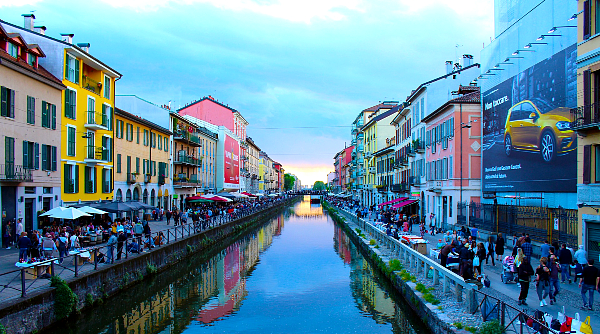Considered one of the world’s fashion and design capitals, as well as a financial hub, Milan is also a city of culture and thought. While always looking towards the future, this Lombard capital lovingly preserves its prominent history, boasting spectacular museums and some of the most monumental churches in Italy.
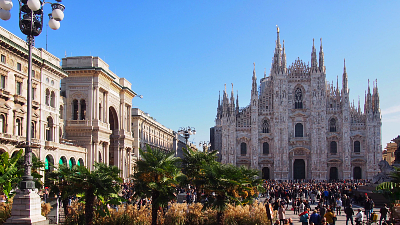
Duomo di Milano
A signature landmark in the heart of the city is the Duomo di Milano. Construction began in 1386 by Gian Galeazzo Visconti, Duke of Milan, and involved various artists, sculptors, and the Milanese themselves who offered their labor. The Cathedral is the largest and most complex Gothic construction in Italy, made of pinkish-white marble. On the highest spire stands the golden statue of the Madonnina.
Inside, admire the columns between the five naves: the Cathedral is the only church in the world with capitals decorated with statues; the stained glass windows show biblical scenes, including the Last Judgement; on the floor is the Solar Sundial, made in 1786 by the Brera Astronomical Observatory. Taking the elevator, visitors can go up to the terraces for a closer at the spires, the Madonnina, and a panoramic view of the city.
Another itinerary must is the Galleria Vittorio Emanuele II, the oldest and most famous shopping gallery in Italy. Built in a neo-Renaissance style, it is one of the greatest examples of iron architecture in Europe. With its great triumphal arch entrance that stands out majestically next to the Duomo of Milan, it has a cross-shaped plan and the intersection is called the Octagon, with the central dome measuring 47 meters in height.
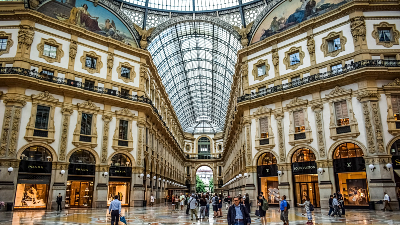
Galleria Vittorio Emanuele II
Housing within a four-story double arcade and containing stores like Prada and Louis Vuitton, this is a must-see when you visit Milan.
Districts well worth visiting include NoLo, an acronym for North of Loreto. This is a multicultural district with lively nightlife, art galleries, concept stores, and ethnic and vegan restaurants. Thanks to the street artists in via Pontano, there is an open-air gallery with graffiti and murals. In the area, there is also an arthouse cinema where you can watch art films in their original language.
Casoretto is a popular district where you can stroll among colorful villas, trees, stores, and bicycle workshops. Here you will find Casa Corbellini-Wassermann dating back to the ’30s, with the spiral staircase made of solid marble blocks, the Armenian Apostolic Church, built according to the classical style, and the Church of Santa Maria Bianca Della Misericordia, an abbey dating back to the 1400s hosting a fresco of the White Virgin.
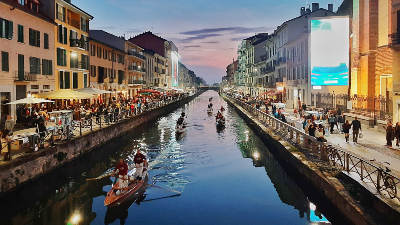
Navigli
The scenic district known as the Navigli starts at the Darsena in Porta Ticinese, from which the two waterways branch off. It is the perfect place for experiencing the nightlife of Milan, with trendy clubs, bars, and small shops merged in a unique context hosting a mix of modern buildings, Art Nouveau buildings, and the famous “railing houses”, typical of Milanese architecture.
Art, spas, and many restaurants can be found in Porta Romana. The arch by the same name, in Piazzale Medaglie d’Oro, was one of the six main access gates to Milan. Nearby is Casa Sartorio, a building designed by Enrico Provasi in 1910, that resembles the Flatiron Building in New York City.
Brera in the heart of Milan, known as the artists’ district for its timeless charm is considered by many the most beautiful area of Milan. In 1776, Empress Maria Theresa of Austria had the Academy of Fine Arts built here, and so since the 19th century, the district has been a destination for artists who have helped turn it into the city’s cultural district. Even today, this artistic spirit is embodied by the Brera Design District project, the most important district for the promotion of design in Italy.
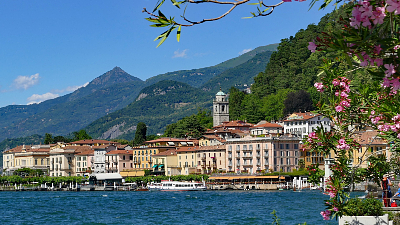
Lake Como
Last but certainly not least, do NOT miss the infamous Lake Como with a gorgeous landscape that combines mountains, forests, flower-filled parks, and clear waters overlooked by dreamy villas and villages to explore. In the center is Bellagio, the pearl of the Lario.
You can glide over the two-pronged lake on the Brunate rack and pinion cable car, or descend the 143 steps of the spiral staircase – with a view of the Volta Lighthouse at San Maurizio. But nothing beats the views enjoyed from a boat. Conveniently, a boat taxi system connects all the main resorts on the two branches of the lake.
Source: Italy Tourism
Photo Credits:
Lead – by MONETTI from Pixabay
Duomo di Milano – by Andrea F on Unsplash
Galleria Vittorio Emanuele II by Vetsikas from Pixabay
Navigli by Siavash on Unsplash
Lake Como by Angelika from Pixabay


